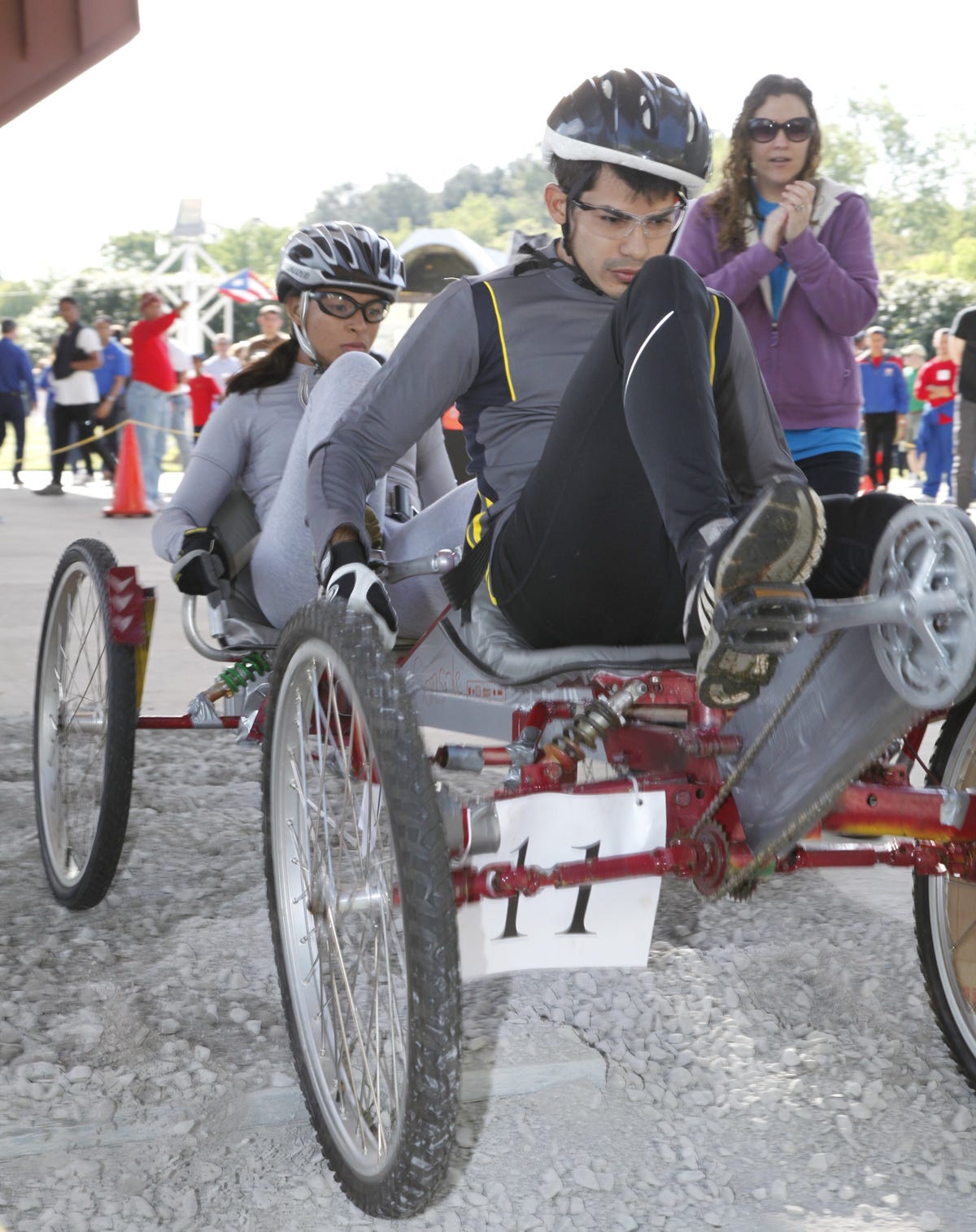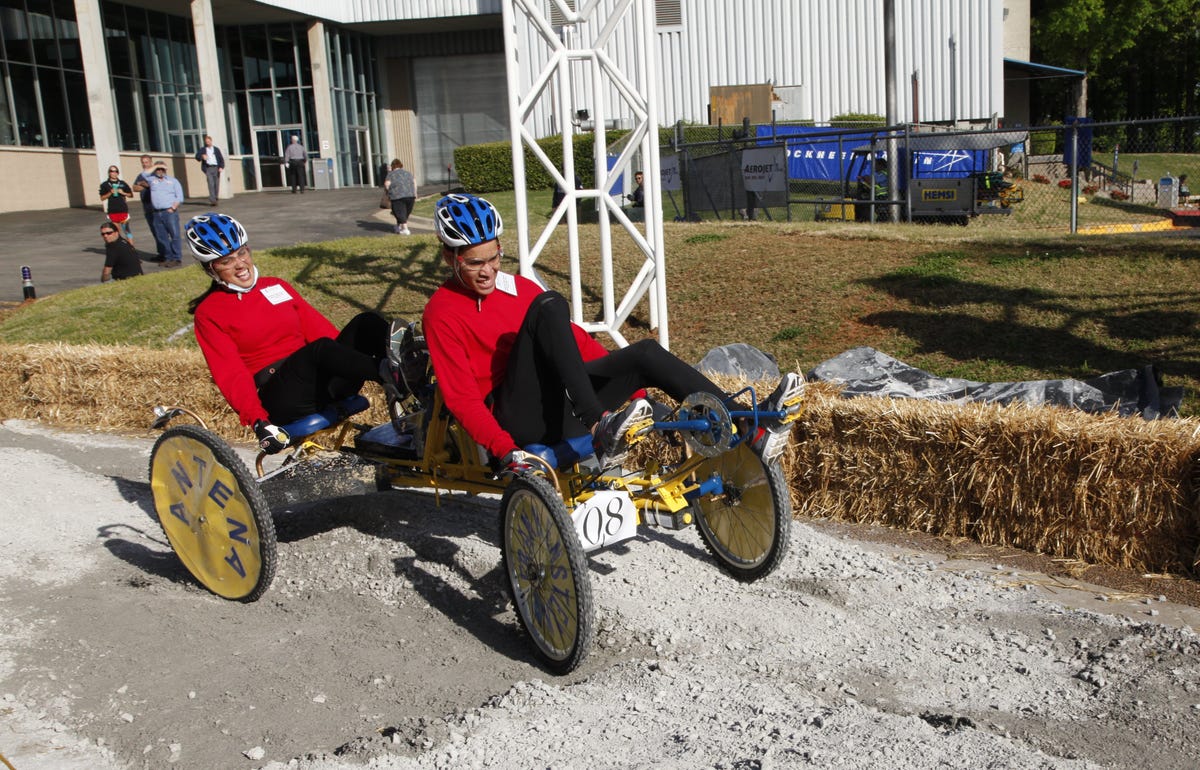NASA's Great Moonbuggy Race of 2013 (pictures)
For two decades, the space agency has drawn on the example of the Apollo lunar rover to inspire students to feats of engineering and athletic prowess.

Moonbuggy with pedal power
For two decades, NASA has used its Great Moonbuggy Race as way to inspire students to feats of engineering and athletic prowess. Competitors have to design, build, and race lightweight, human-powered vehicles that can traverse a half-mile course simulating the surface of the moon. NASA says that the "race teams face many of the same engineering challenges dealt with by Apollo-era lunar rover developers ... in the late 1960s."
This photo shows the team from the University of Puerto Rico at Humacao, which took first place in the college division with a time of 3 minutes, 32 seconds. The event was held Friday and Saturday at the U.S. Space & Rocket Center in Huntsville, Ala.
Team Russia
Negotiating a curve
Apollo 15 lunar rover
Astronaut David Scott in lunar rover
Rover and Mount Hadley


